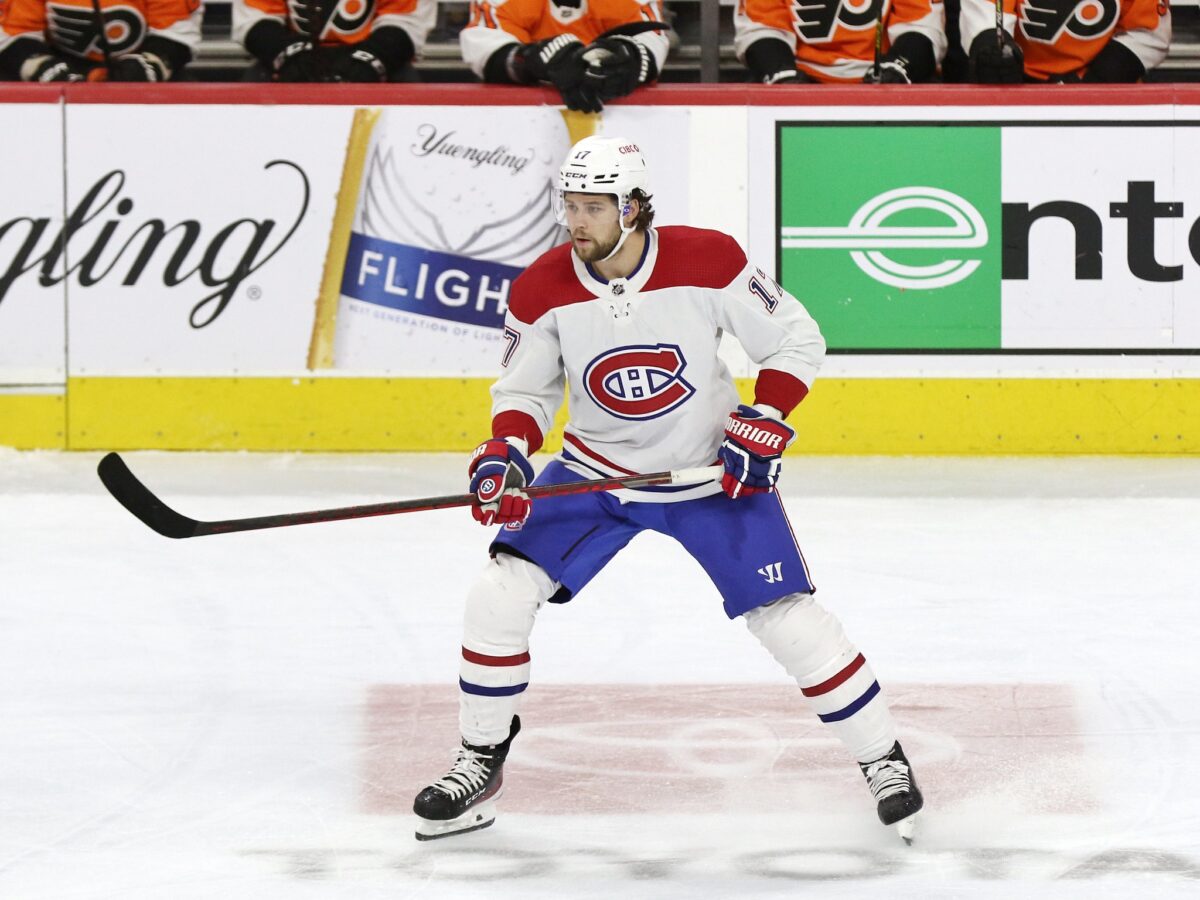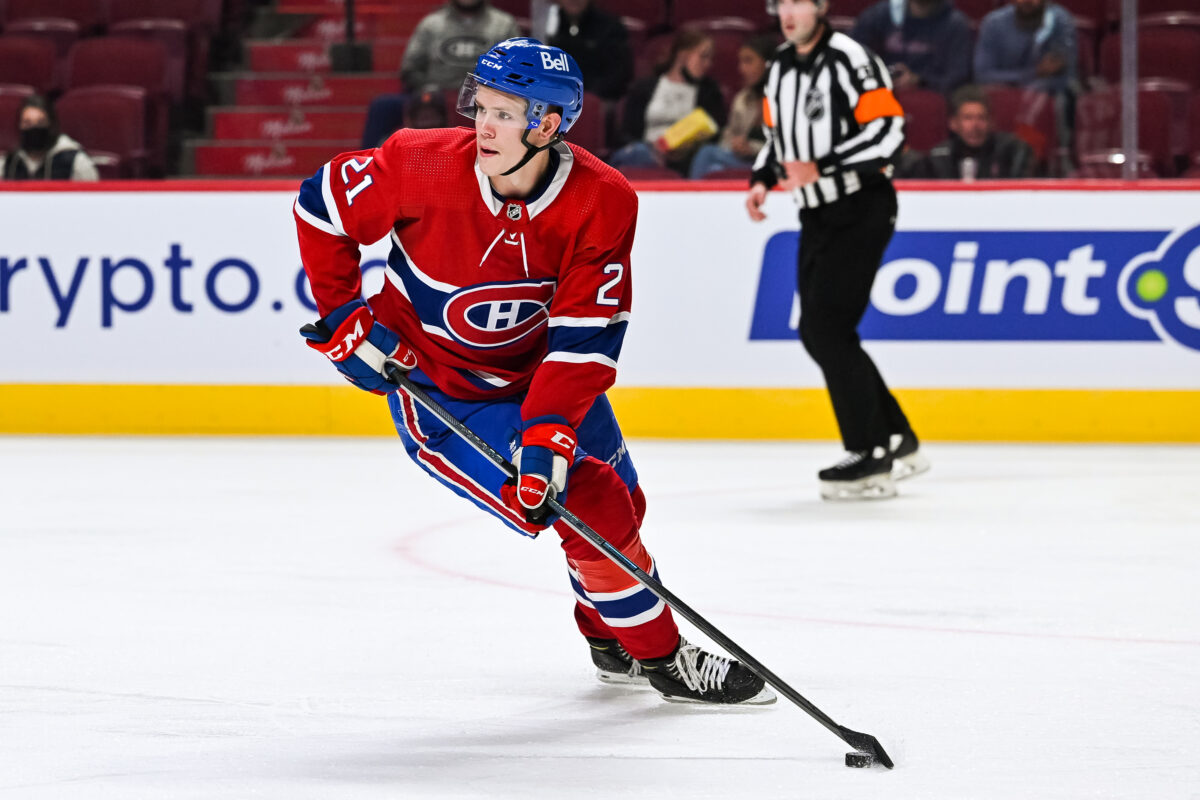In the past, the NHL championed toughness and size as key components of a contending team. Franchises such as the Boston Bruins and Philadelphia Flyers were well known for building to those characteristics. The Bruins were known as the “Big Bad Bruins” and the Flyers, the “Broadstreet Bullies.” The Montreal Canadiens, however, avoided that plan, building the “Flying Frenchmen” built on a fast-paced style of play, which led to a dynasty in the 1970s. Today, they face their first real rebuild and need to build a roster that not only harkens back to those skilled teams of the 1970s but also one that adds a dimension of intimidation as Boston and Philadelphia had.
However, during that era, the Habs still ensured they had some size and intimidation to compete against the bullies of the league. Players such as Larry Robinson, Serge Savard, and, later, Chris Nilan, provided some skill and intimidation to protect the team’s smaller skilled players. Since then, the Canadiens have been unable to find that balance.
Even with the NHL becoming faster and more skill-based, there is still a need for that intimidation factor. Some teams do use elite skills, like the Toronto Maple Leafs, with a power play that can burn any opponent. Other teams that haven’t had multiple top-10 draft picks in succession, as Toronto had, will still need to rely on size. For those teams, which look to include the Canadiens, there is a fine balance to be found between skill and intimidation.
Canadiens’ Final Attempt
Until very recently, the Canadiens were a team of small players that couldn’t handle the physicality of the game and became known as a team of Smurfs. During the Marc Bergevin era, the former general manager attempted to add those missing pieces of size and intimidation to help his team succeed in the playoffs, and did so to some success.
But there is a balance. Bergevin had a saying, “some players get you in the playoffs, others get you through it” and during his tenure, he had a difficult time building a roster that could do both. Until 2021, his team could reach the playoffs but was unable to handle the style of play necessary to win. That was evident during the 2020 COVID bubble when the team got in as the 24th seed, and proceeded to beat the Pittsburgh Penguins 3-1 in a best-of-five series before losing to the Philadelphia Flyers.
At that time, the team decided to “go big;” that is, to acquire large, heavy players who can punish opponents physically. In addition to former captain Shea Weber, Bergevin added two big, physical defensemen in Ben Chiarot and Joel Edmundson. Joel Armia is a big-bodied puck-possession player who wins board battles and can play a heavy cycle game. Josh Anderson, is a speedy power forward who was a key part of his team when the Columbus Blue Jackets swept the Tampa Bay Lightning in the first round a few years ago. Tyler Toffoli is a big winger who could handle the physical play. Then he added depth players in Eric Staal and Corey Perry — big forwards with Stanley Cup rings — to play a bottom-six role.

While that team had a middling pandemic-shortened 2020-21 season, they barely clawed their way into the Stanley Cup Playoffs by finishing fourth in the Scotia North Division. However, to prove Bergevin’s saying true, the team made the playoffs with some opportunistic play in key games, then he relied on the players he added with size to get them through the playoffs, leading to the team’s first Stanley Cup Final appearance in 28 years, although they lost to the Lighting.
Canadiens Shift to a Rebuild
That deep run seemed to create chaos within the organization. Bad luck, injuries, and more led to Bergevin’s firing and a new management team led by executive vice president Jeff Gorton and general manager Kent Hughes. That new path has become clear in the less than one calendar year they’ve been at the helm. It is not just size they are looking for, but size mixed with skill and mobility since skating has become a necessity in today’s NHL. Without it, players can’t keep up with the pace of the game.
Related: Canadiens Focused on Development, Not Wins in 2022-23
First-overall pick Juraj Slafkovsky is an excellent example. In debating his selection, co-director of amateur scouting Nick Bobrov stated that he was the best possible prospect in the draft, but also, by picking him, management did not need to value size over skill later in the draft since Slafkovsky has both. That proved prophetic in the second round when the Canadiens chose diminutive, but highly skilled, defenseman Lane Hutson.
Canadiens Add Intimidation
Some players who will play important roles in the Habs’ future were brought in during the Bergevin era. Kaiden Guhle and Arber Xhekaj are behemoths. They will start the 2022-23 season on the roster, and their style of play and approach to the game will provide that necessary intimidation factor the Canadiens will need to be successful.

Guhle will not only get the team to the playoffs but get them through the postseason as well. He was drafted in part for his leadership. He was captain of Team Canada at the 2022 World Junior Championships and has won the Western Hockey League (WHL) championship with the Edmonton Oil Kings, which will help him in his transition to the professional game. He has even been compared to Weber in his style and approach to the game by Marc Habschied, who coached both Weber and Guhle in junior hockey.
“He’s multi-dimensional. Very good man and good heart and incredible person. And once the puck drops, he’s playing to win. He gets his eyebrows down and he can be nasty.”
–Marc Habscheid
What made him successful in the junior ranks — his skating, mobility, and size — will also help him in the NHL. That being said, comparing him to a possible future Hall-of-Fame defender in Weber may be setting the bar too high for the young man. Patience while he develops his game will be needed until he becomes comfortable enough with the pace of the NHL and can play with the edge he is known for.
Another young defender who is making a name for himself without ever having played an NHL game is Xhekaj. While he does have the necessary mobility and defensive skills to play in a bottom-pairing role, he plays the game with an edge that looks like a throwback to the Big Bad Bruins; he brings a definite intimidation factor. After only one preseason game against the Ottawa Senators, Sens head coach DJ Smith made note of Xhekaj.
It’s true, Xhekaj does target his opponents. He plays with what looks like an angry, uncontrolled edge, but in reality, it’s a calculated part of his game. In a radio segment on TSN 690, Gord Miller mentioned the impact the defender has against his opponents stating, “He left a trail of devastation behind him in the OHL last year. I talked to several OHL coaches about (Xhekaj). People were literally terrified of him.”
This 2022-23 edition of the Canadiens will not be expected to win many games. The roster lacks experience and has holes while the organization continues its rebuild. However, the losses will not be due to a lack of physicality. To some extent, the intimidation factor will become an integral part of the rebuild by allowing for more space on the ice for the skilled youth to further develop their game. Most of all, it will be a season of reputation building, when the Canadiens will put the league on notice that they are no longer “Smurfs” and will not be pushed around.
